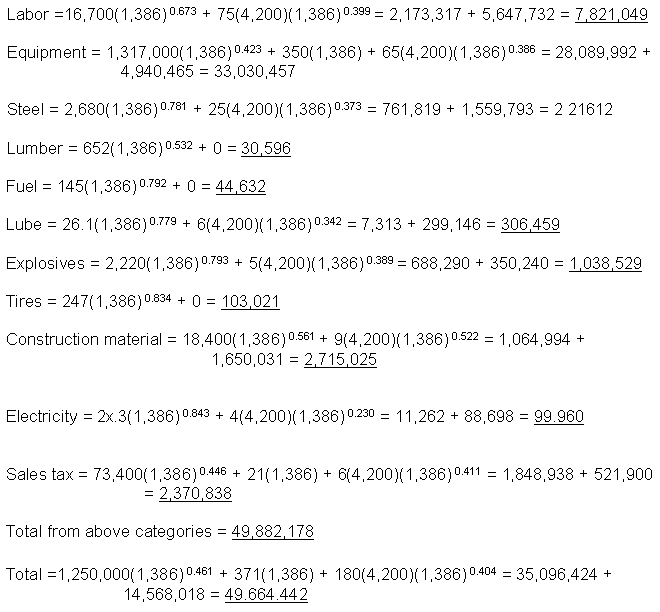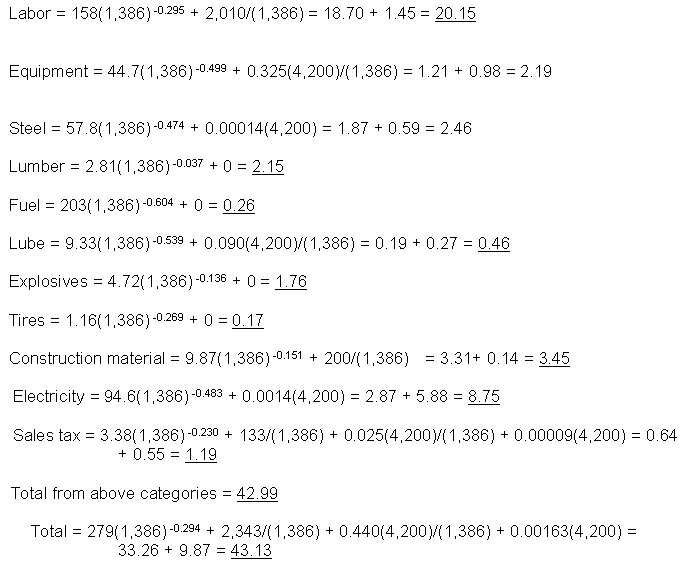
APPENDIX D. EXAMPLE PROBLEM, UNDERGROUND CUT-AND-FILL MINE
For an example problem, a cost estimate will be made for an underground cut-and-fill mine. Assume the deposit is a steeply-dipping vein with an ore reserve of 3,361,000 st. The depth of the ore body is 4.200 ft.
Mine life:
Given a known ore reserve tonnage, the life and daily capacity for the mining operation can be determined using equations 2, 3, and 5 (where dilution factor (df) and recovery factor (rf) are from table 1):

To determine the daily mining capacity, apply equation 5, since most cut-and-fill mines operate 260 d/yr (5 d/wk):

where: C = mine capacity in st/d for 260 d/yr (5 d/wk)
Depth factor:
Each of the underground mine models is based on an adit entry to the mine. For this example, assume a shaft entry, and apply the depth factors found in table 10. The factors will be added directly to the base-case equations in table 12, where X = 1,386 st/d and D = 4,200 ft.
Capital cost estimate:

Comparison of totals using individual cost categories vs. total cost equation: 49,882,178/49,664,442 = 1.004, 0.4% difference due to rounding in regression equations.
Operating cost estimate:

Comparison of totals using individual cost categories vs. total cost equation: 42.99/43.13 = 0.997, 0.3% difference
due to rounding in regression equations.